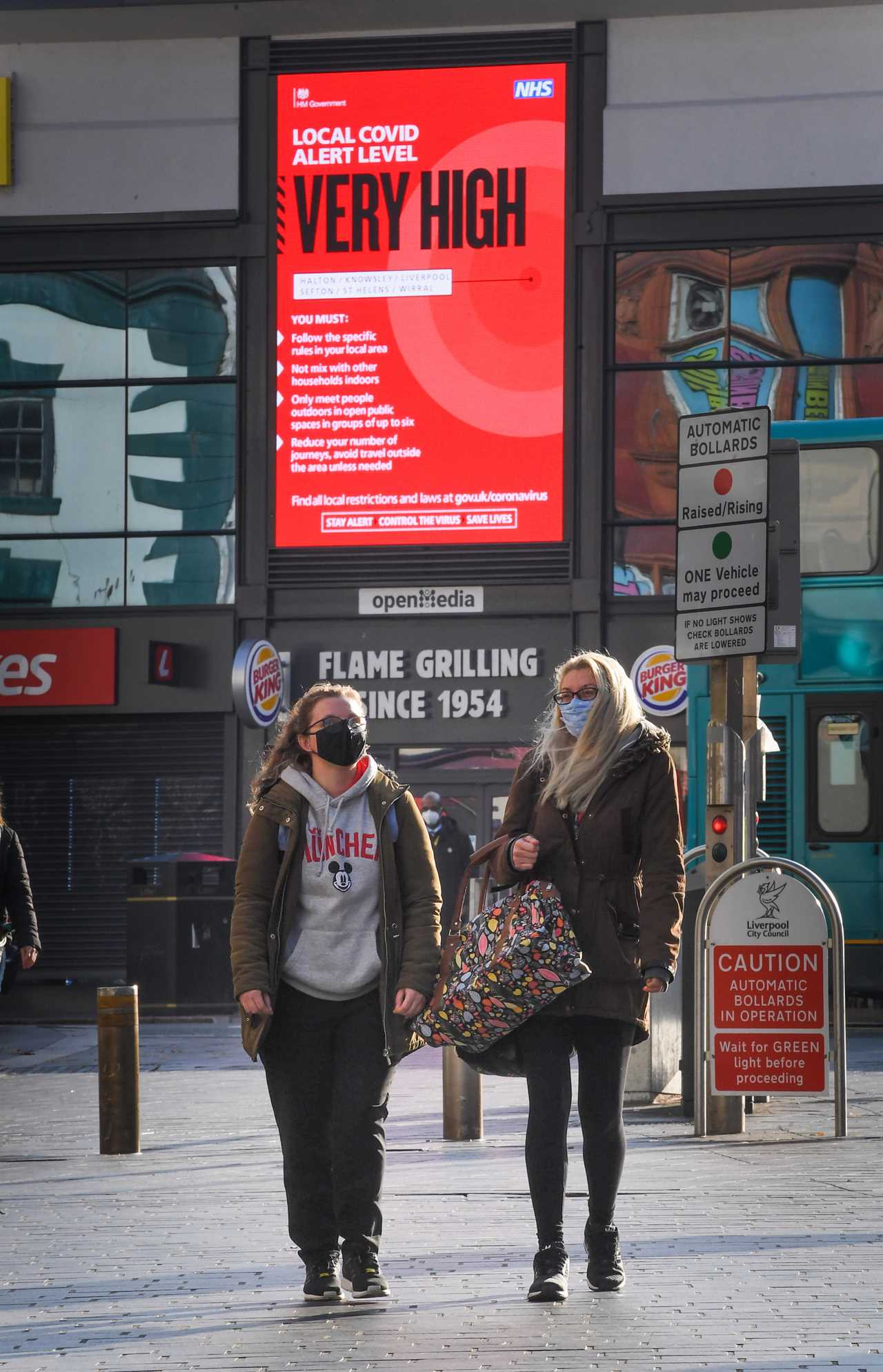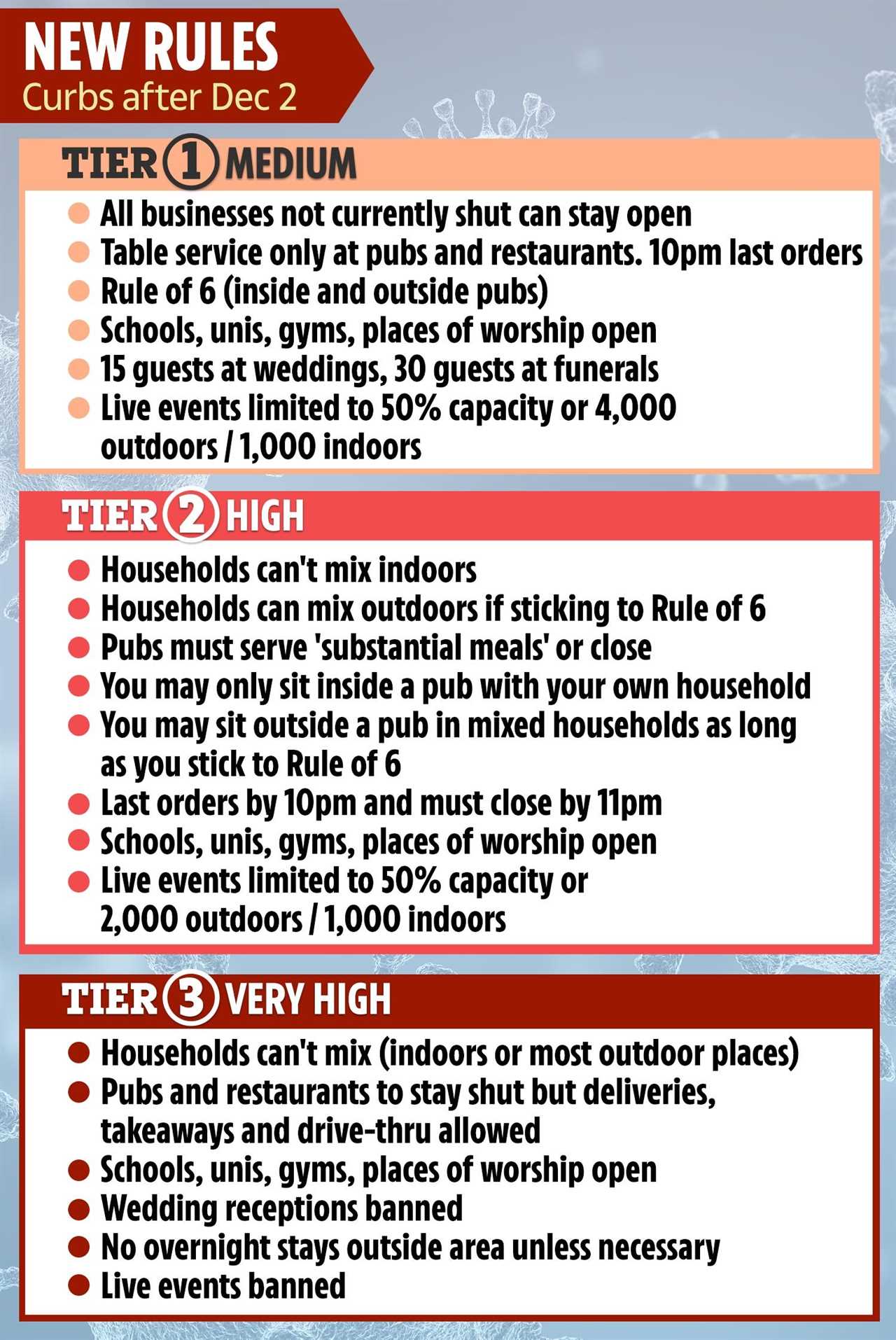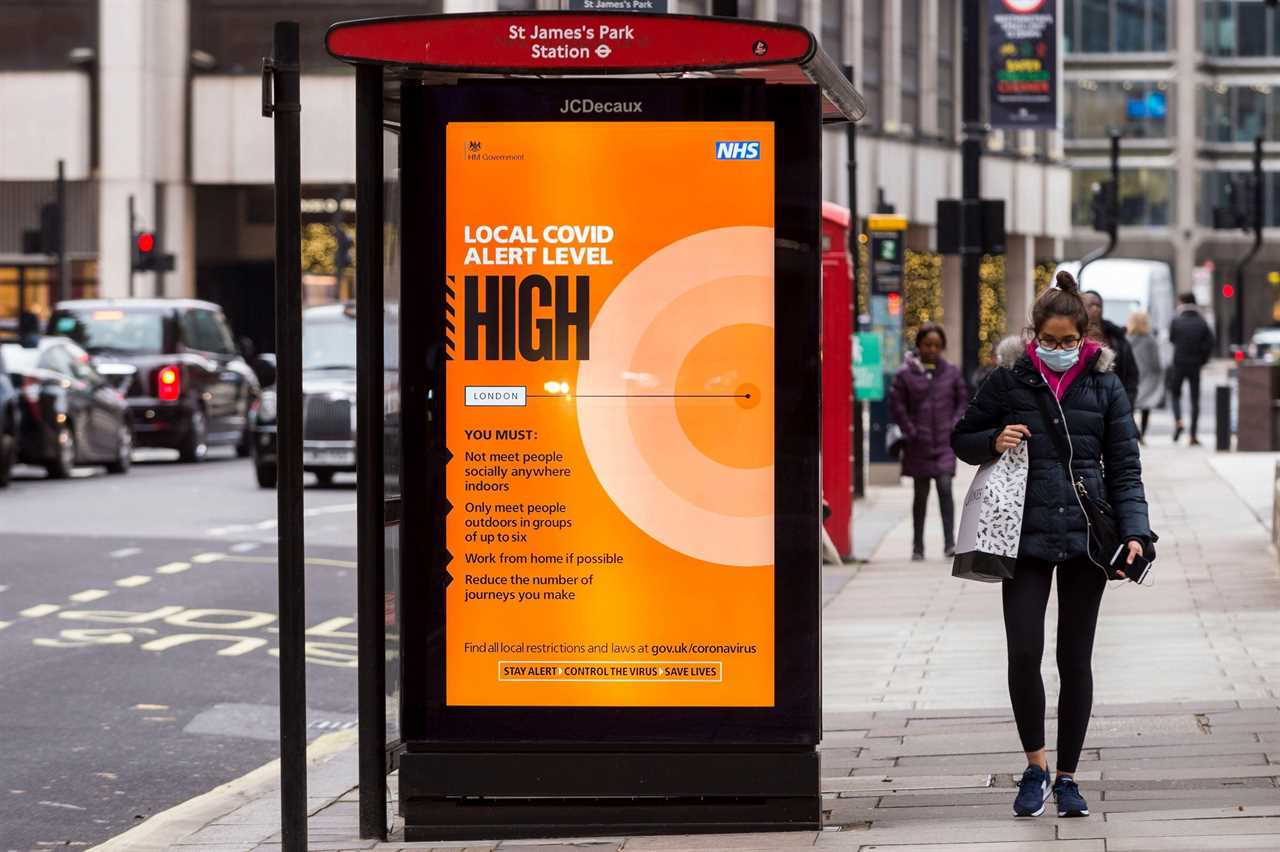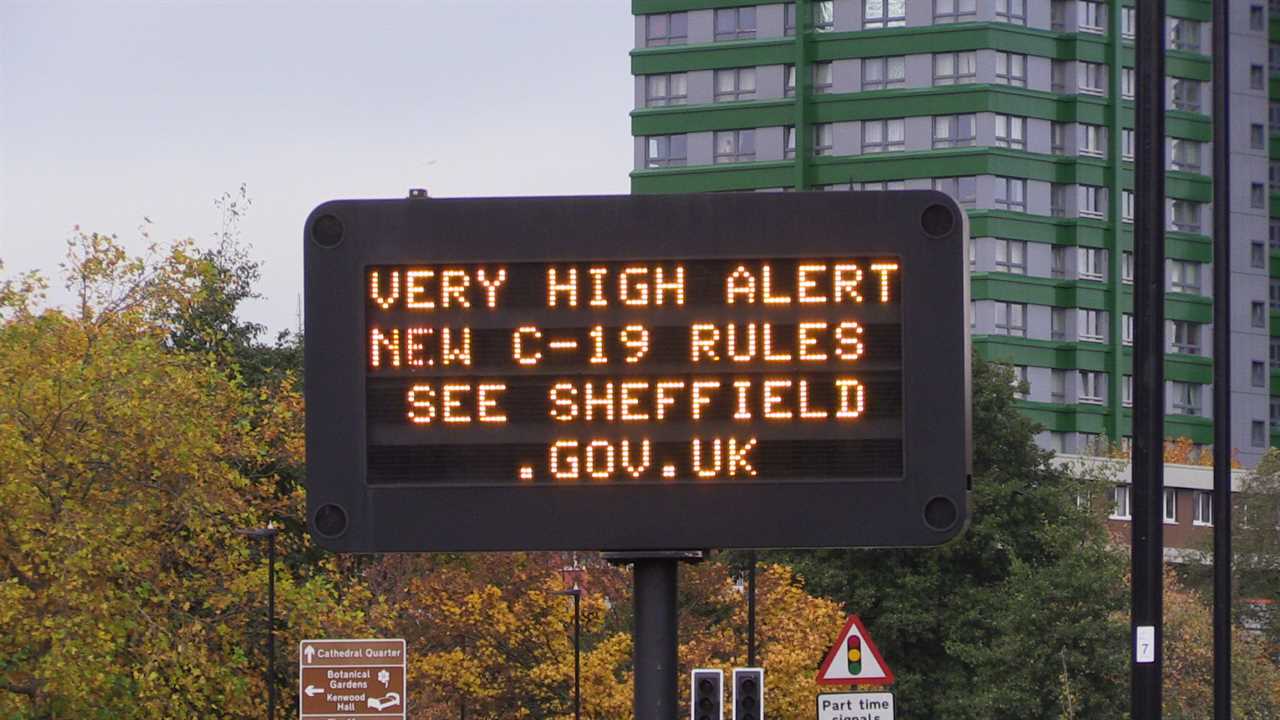ALMOST all of the country has been plunged into tougher Tier 2 and 3 rules today.
The new system was given the green light after being approved my MPs in last night’s vote.

Huge parts of the country will be thrown into Tier 3

More than 55 million Brits are in the strictest two tiers which means they cannot mix indoors with those in other households.
But non-essential shops and businesses, such as hairdressers and beauty salons, can now reopen for the first time in a month.
Pubs and restaurants can open their doors in tier one and two areas, but alcohol needs to be served with a “substantial meal”.
The Health Secretary warned it was critical to have stricter rules in the “majority of England”.
Matt Hancock said: “We cannot simply flick a switch and try to return to life straight back to normal.
“If we did this we would undo the hard work of so many and see the NHS overwhelmed.”
The Health Secretary stressed the tougher tiers were essential – and only three areas, Cornwall, the Isle of Wight and the Isle of Scilly, will be in the lowest tier.
All of England has again be divided into a three-tier system designed to curb the spread of coronavirus.
It was brought in after the national four-week lockdown came to an end on Wednesday.
The measures will be constantly monitored with the areas reviewed every two week – with the first review set for December 16.
Manchester, Birmingham, Newcastle and most of Yorkshire will all be thrown into the most drastic Tier 3 – meaning pubs and restaurants will have to close.
London and Liverpool have avoided being thrown into the highest Tier 3, which will allow pubs and restaurants to remain open, but they must serve a substantial meal and different households can only mix outside.
Liverpool is being hailed as a success story after mass testing by the Army helped bring infection rates down to 162 per 100,000 people from 700 six weeks ago.
Mr Hancock said: “(Liverpool) has shown that a combination of sticking by the rules and community testing at very large scale can help to bring this virus right down.”
And Liverpool City Council wrote on Twitter: “This wouldn’t have been possible without you, the people. From following restrictions to taking part in our #MassTesting pilot.”
But cases in areas like Kent have skyrocketed, with Swale in Kent becoming the worst hotspot for coronavirus in England at 539 cases per 100,000 in the week to November 20.
Some local politicians were furious about having their areas thrown into Tier 2 – despite having lower infection rates.
York Central MP Rachael Maskell tweeted: “Despite the incredible work of everyone in York, it has been placed in Tier 2.
DECISIONS, DECISIONS
“The Government has selected large geographical areas, rather than study the local data. I await their rationale.
“I raised this with the Health Minister earlier this week & will do so again later today.”
Mr Hancock said the decision over what Tier each area is thrown into depends on five crucial indicators.
The most important factor is the anticipated pressure on local NHS services and whether there is a risk it could become overwhelmed by soaring case numbers.
But Mr Hancock stressed there is no “automatic” number of new cases that pushes an area into a higher Tier.
Another factor is on the nature of an outbreak – if one area has a very high number of cases but it is confined to one school or workplace, then it might not be given stricter rules.
Other indicators are the speed at which cases are rising and falling – as well as the number of coronavirus cases across all age groups, and crucially the number of new infections in the over 65s.

London escaped being thrown into the very high
Covid alert level
TIER 3 – VERY HIGH RISK
Tier 3 includes areas of “very high” risk, where coronavirus transmission rates are of the greatest concern.
In these areas households are not allowed to mix either indoors or outdoors in private gardens.
Pubs and bars have closed in the very high alert level areas – except for takeaway.
People have also been advised against travel in and out of the areas.
But they will get access to new rapid-result tests for everyone which give tests in under an hour, a strategy which has seen Liverpool’s cases drop drastically.
They hope that means they can easily escape the tougher rules.

South Yorkshire, including Sheffield was previously under Tier 3 rules
TIER 2 – HIGH RISK
Areas in Tier Two – where there is a high risk of coronavirus – are banned from mixing with other households indoors, including in pubs.
When outside, the rule of six applies.
Current social distancing measures, the “rule of six” outdoors and the 10pm curfew will continue in this tier.
And most areas which are currently subject to local restrictions will automatically move into it.
TIER 1 – MEDIUM RISK
Areas in Tier 1 — where there is medium risk of the virus — will be subject to current social distancing measures, the “rule of six” and the current 10pm pub curfew.
Not many areas are expected to be in this bracket.
In addition, businesses can operate – as long as they’re Covid-secure – although clubs will remain shut.
Schools, universities and places of worship remain open.
Weddings and funerals can go ahead with restrictions on the number of attendees.










